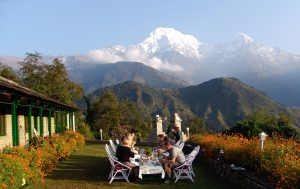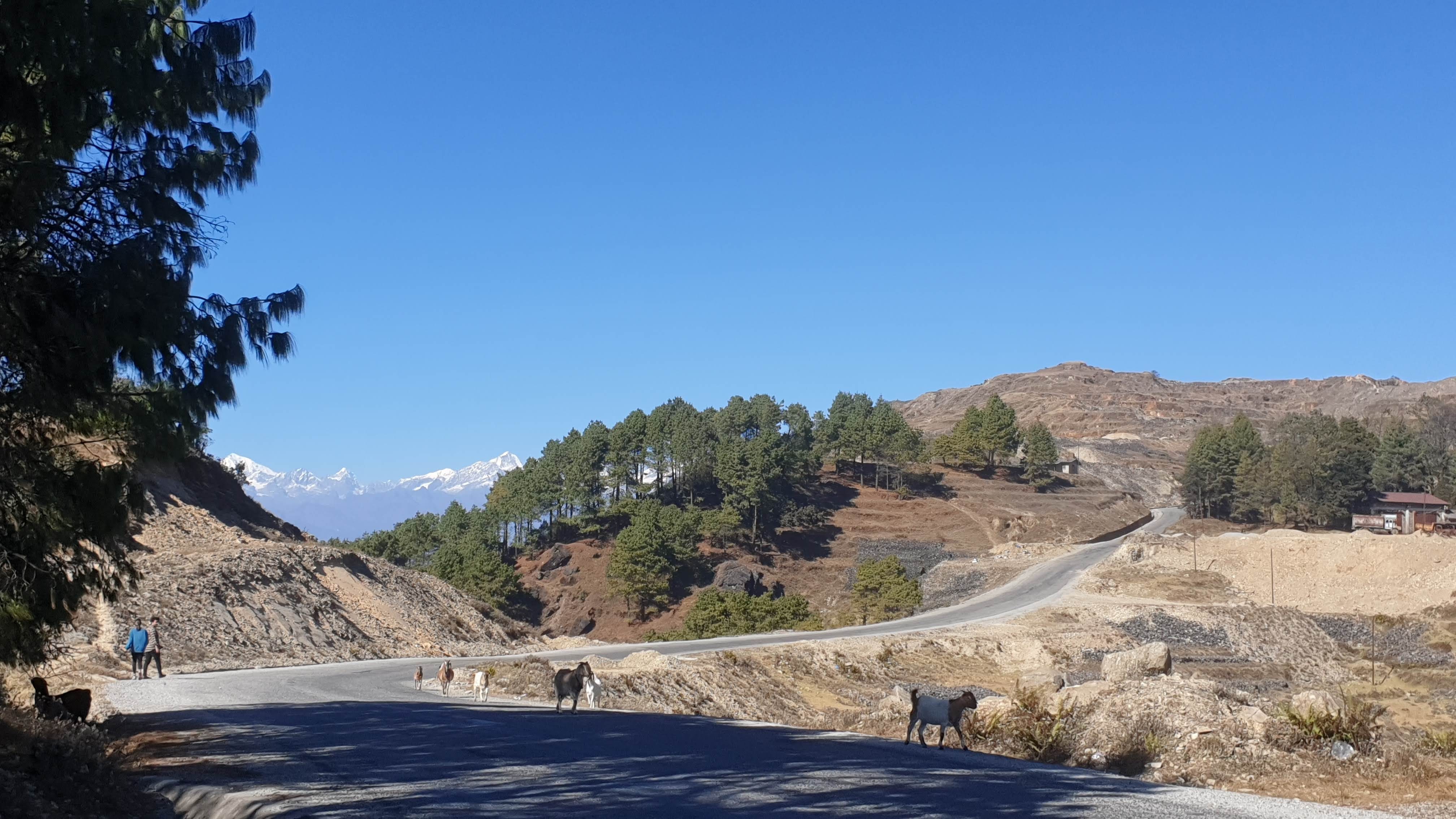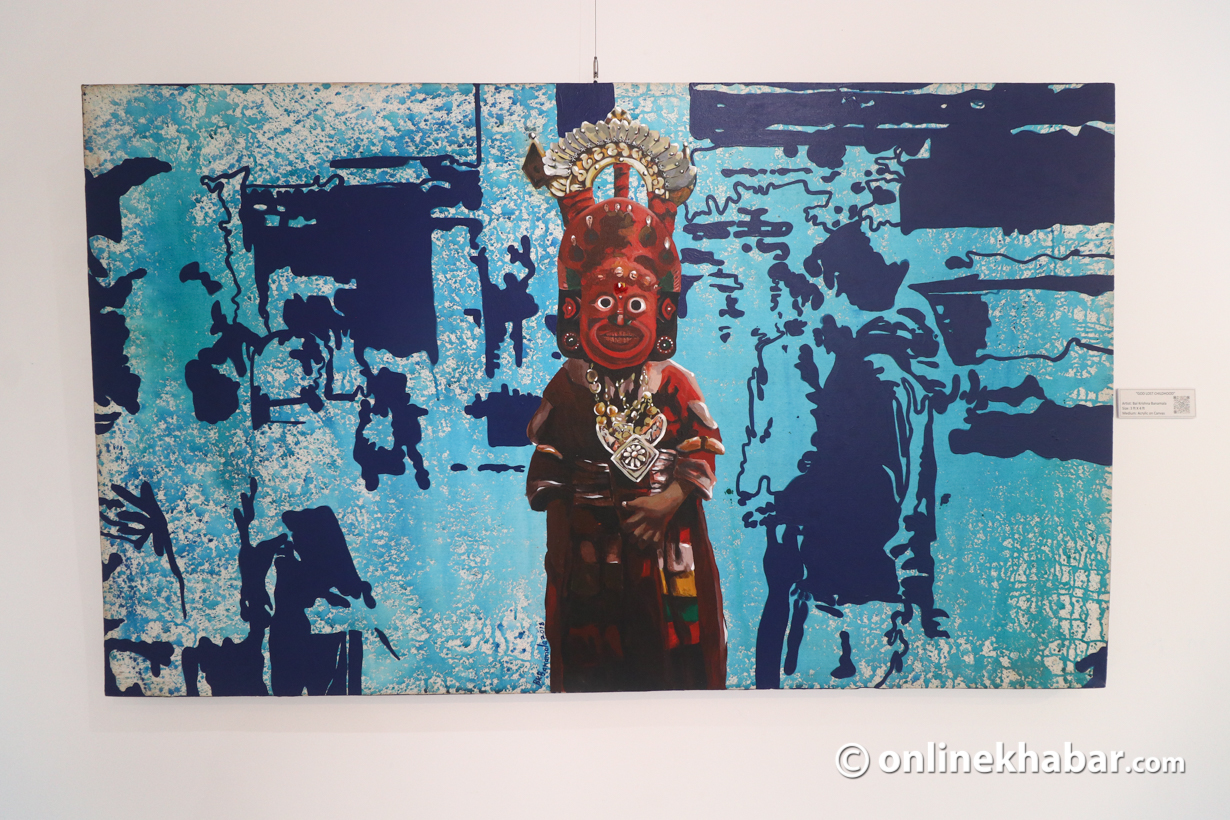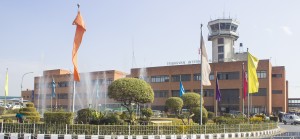Buddhism is one of the biggest religions in Nepal and it has inspired many philosophies and architectures around the world. Following which, many stupas have been built here. Stupas are structures made of a hemispherical base, majorly containing relics of Buddha. Above the base is a triangular structure with 13 steps, the structure inspired by the Buddhist guide to mediation towards nirvana. Some of these architectures are famous worldwide.
For domestic and international tourists, here we have a list of the biggest stupas in the Kathmandu valley that one can visit.
1. Swayambhu
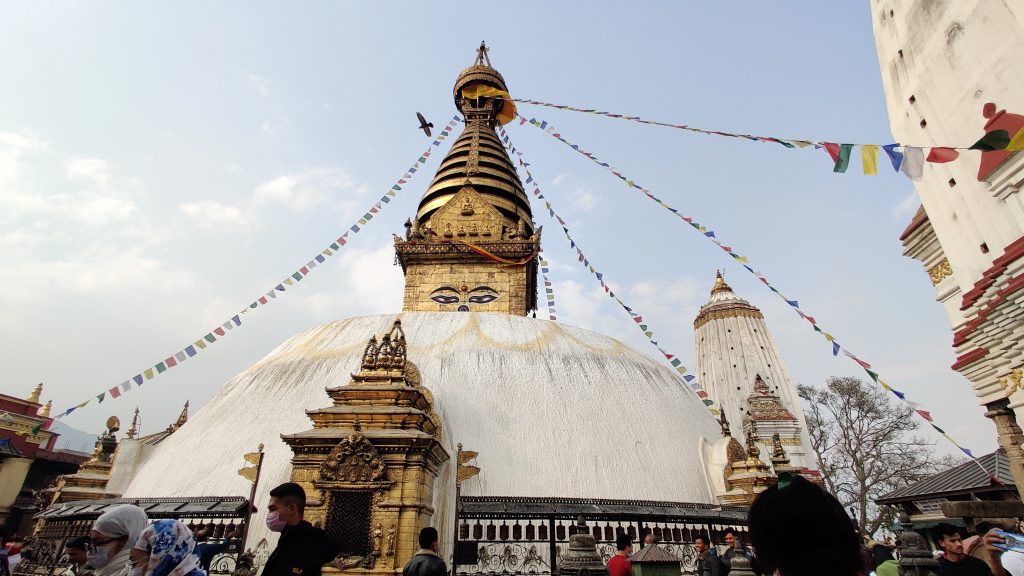
Swayambhu Stupa is one of the most famous stupas in the whole world. This ancient stupa lies atop a hill at its peak in the western part of Kathmandu city. It is also a religious site that is believed to be the first structure in ancient Nepal (or Nepal Mandal).
According to Gopālarājavaṃśāvalī, one of the most popular and important chronicles in the Nepali history, this structure was made in the beginning of by 460 AD by Lichhavi King Vasudeva, the great grandfather of King Manadeva. Archaeologists have found a damaged stone inscription on the site proving the story.
According to Swayambhu Puran, a Buddhist scripture, it is believed a lotus flower carrying eternal light came into existence out of nowhere when the Kathmandu valley was still a pond. This stupa’s name means “something that existed on its own” in Sanskrit and Nepal Bhasa. In Tibetan language, the name means a sublime tree.
This is one of the most important pilgrimage sites in Kathmandu for Buddhist followers and the second most important pilgrimage site for Tibetan Buddhist followers.
2. Bouddha

Bouddha Stupa is known to be the largest stupa in the Kathmandu valley. It is located on the north-eastern outskirts of Kathmandu, about 11 km away from the centre. This UNESCO World Heritage site is one of the most popular tourist destinations in Nepal, all day long throughout the year.
It is believed that this stupa was built by the Tibetan King Songtsen Gampo around 600 AD when he decided to convert to Buddhism. It is also believed that the stupa contains the remains of Kassapa Buddha (one of the seven buddhas of antiquity).
Bouddha was also previously called Khaasti Chaitya, where people collected water to fight the drought as per the myth.
3. Charumati
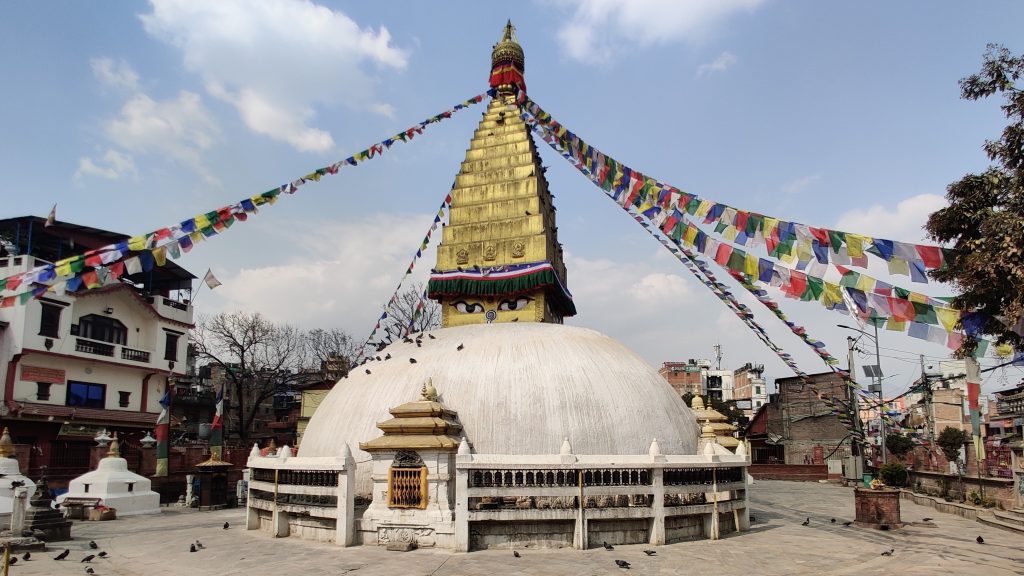
This stupa has been in existence since the fourth century in the ancient neighbourhood of Chabahil. This 2,300-years-old stupa is located in the south-western side of central Chabahil.
It is said the stupa was made by Charumati, the daughter of the Indian emperor Ashoka. She was married to the prince of Kathmandu, Devapala Kshatriya. This was proved after a brick with her name inscribed on it was found during the 2003 restoration of the stupa.
The stupa can be seen from the roadside and is famous among the youth who frequent the site. Adjacent to the stupa is Charumati Bihara that the princess built together with the stupa.
3. Shree Gha
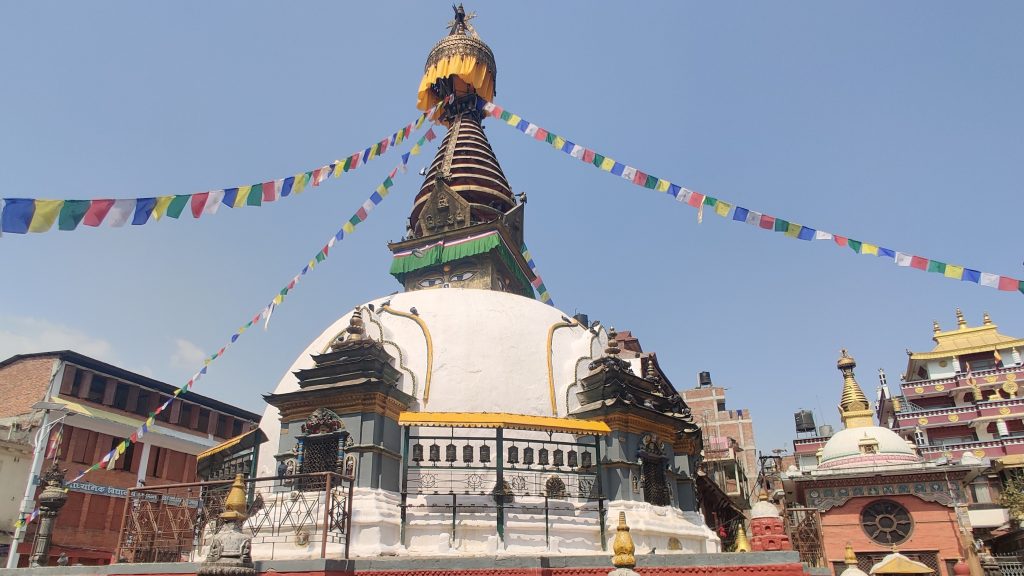
Shree Gha: is a smaller stupa located near Thamel and is a very peaceful place to visit among those busy streets. This stupa can be easily missed since it is located out of people’s sight.
Built in 1650, Shree Gha: (also known as Nagha Bahal chaitya) is referred to as a small replica of the great Swayambhu Stupa complex. It is also called Kaathe Swayambhu Shree Gha Chaitya.
Inside the premises are a two-storey pagoda to Goddess Harati (the goddess of smallpox) and a Tibetan-styled Durbgon Janchup Choeling monastery in the north-eastern corner. There are numerous statues, chaityas, and a school inside the complex and is a popular site for Buddhist Newars, especially during Gun laa.
4. Ashok stupas
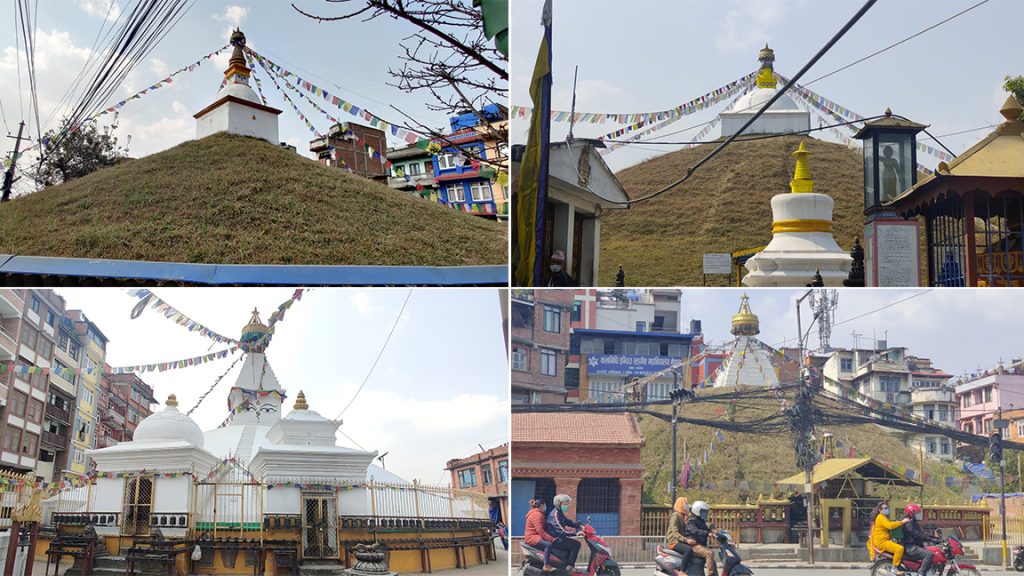
In the reign of Emperor Ashoka, many Buddhist stupas were built in Patan including four Ashoka Stupas. Ashoka visited the Kathmandu valley some 2,500 years ago and built what were the perfect examples of the ancient traditional architecture. Indian emperor Ashoka took refuge under Buddhism, swearing to leave all the violence behind, and went to pilgrimage.
These four stupas are believed to mark four corners of Patan, of which three have earth-mound base structures with prayer wheels around them. The Teta Thura (East) near the Ring Road, Pucho Thura (West) in Pulchowk, and the Ibahi Thura (North) in Sankhamul, and the Lagan Thura (South) near Lagankhel bus park.
5. Pim Bahal Stupa
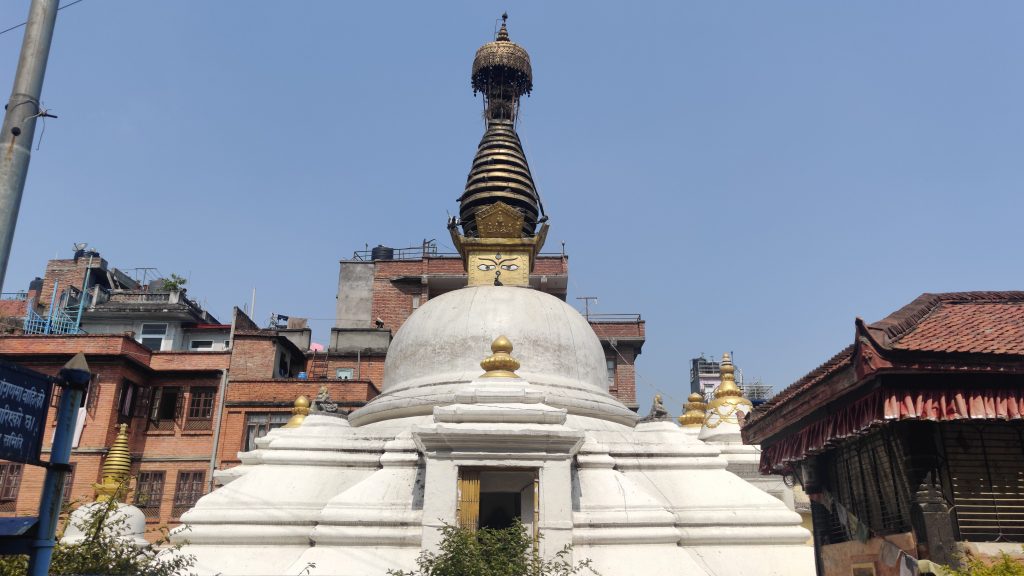
This stupa is another well-known stupa among Buddhist pilgrims. It is situated near the Pim Bahal Pokhari.
The complex is a pretty small square and surrounded by prayer wheels. It is a somewhat quiet space and is located near Patan Dhoka. It is unknown who and when it was built, but Pim Bahal is worth a visit to admire the quiet ambience and its natural beauty by the nearby pond.





